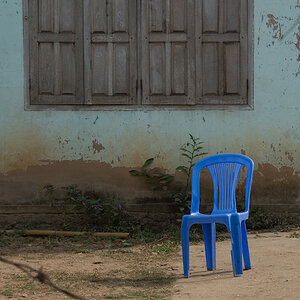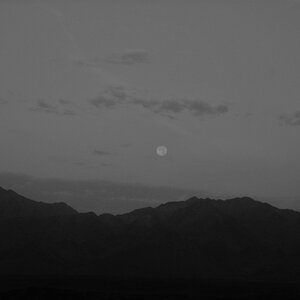Navigation
Install the app
How to install the app on iOS
Follow along with the video below to see how to install our site as a web app on your home screen.

Note: This feature currently requires accessing the site using the built-in Safari browser.
More options
You are using an out of date browser. It may not display this or other websites correctly.
You should upgrade or use an alternative browser.
You should upgrade or use an alternative browser.
A Day in the Life of the World
- Thread starter acgoldis
- Start date
Socrates
TPF Noob!
- Joined
- Jan 28, 2008
- Messages
- 1,183
- Reaction score
- 0
- Location
- Exit #5
- Can others edit my Photos
- Photos NOT OK to edit
It's 10 AM to 12 *noon* Eastern time, 7 AM to 10 AM Pacific time, and so forth.
Sorry about the confusion
Californians get three hours but easterners get only two hours. Is that because Californians are slow?
Seefutlung
TPF Noob!
- Joined
- Apr 13, 2007
- Messages
- 1,558
- Reaction score
- 62
- Location
- SoCal
- Website
- www.garyayala.smugmug.com
- Can others edit my Photos
- Photos OK to edit
I'm with Socrates ... that is how the original "Day in the Life of ..." were photographed (there are a number of them).
Gary
PS- I'm in.
G
Gary
PS- I'm in.
G
Socrates
TPF Noob!
- Joined
- Jan 28, 2008
- Messages
- 1,183
- Reaction score
- 0
- Location
- Exit #5
- Can others edit my Photos
- Photos NOT OK to edit
I'm with Socrates ... that is how the original "Day in the Life of ..." were photographed (there are a number of them).
Gary
PS- I'm in.
G
C'mon guys...
Is this "a day" in the life of the world or "two hours" in the life of the world? Anyone else agree with midnight-to-midnight local time?
You know, I was originally intending the same GMT two-hour interval in all cases. However, the more that I think about it, the more it makes sense to do 24 hours.
1. We can compare what various countries do at the same time of the day. Do people in Bhutan do different things at 8:00 AM than people in Nigeria?
2. The original purpose of the exercise will still apply: tack a time zone->GMT conversion on somewhere and you'll be able to figure out which photographs were taken at the same time.
3. A 24 hour interval will allow for more photographs, so you can pick the best ones.
4. A 24 hour interval will allow people to drive to interesting places to take the pictures. I won't be caught on my little airplane.
5. People in Hawaii won't be left out -- you won't get many 3 AM pictures or whatever it is over there according to the original plan.
With that in mind, make it 3/29 from 00:00 to 23:59 GMT. If it's going to be global, we need GMT.
This means we'll get some Friday shots as well: weekday as well as weekend
activites will be represented.
I'm going to be leaving for the Galapagos two days from now (the fact that I would be in the Galapagos is pure coincidence) and will be taking pictures assuming the 00:00 to 23:59 interval. Don't forget to write down the time you took the picture if possible.
This may actually work!
ACG
1. We can compare what various countries do at the same time of the day. Do people in Bhutan do different things at 8:00 AM than people in Nigeria?
2. The original purpose of the exercise will still apply: tack a time zone->GMT conversion on somewhere and you'll be able to figure out which photographs were taken at the same time.
3. A 24 hour interval will allow for more photographs, so you can pick the best ones.
4. A 24 hour interval will allow people to drive to interesting places to take the pictures. I won't be caught on my little airplane.
5. People in Hawaii won't be left out -- you won't get many 3 AM pictures or whatever it is over there according to the original plan.
With that in mind, make it 3/29 from 00:00 to 23:59 GMT. If it's going to be global, we need GMT.
This means we'll get some Friday shots as well: weekday as well as weekend
activites will be represented.
I'm going to be leaving for the Galapagos two days from now (the fact that I would be in the Galapagos is pure coincidence) and will be taking pictures assuming the 00:00 to 23:59 interval. Don't forget to write down the time you took the picture if possible.
This may actually work!
ACG
NYPhotographer
TPF Noob!
- Joined
- Mar 11, 2008
- Messages
- 55
- Reaction score
- 0
- Location
- Brooklyn,NY
- Website
- raphaelg.wordpress.com
You know, I was originally intending the same GMT two-hour interval in all cases. However, the more that I think about it, the more it makes sense to do 24 hours.
1. We can compare what various countries do at the same time of the day. Do people in Bhutan do different things at 8:00 AM than people in Nigeria?
2. The original purpose of the exercise will still apply: tack a time zone->GMT conversion on somewhere and you'll be able to figure out which photographs were taken at the same time.
3. A 24 hour interval will allow for more photographs, so you can pick the best ones.
4. A 24 hour interval will allow people to drive to interesting places to take the pictures. I won't be caught on my little airplane.
5. People in Hawaii won't be left out -- you won't get many 3 AM pictures or whatever it is over there according to the original plan.
With that in mind, make it 3/29 from 00:00 to 23:59 GMT. If it's going to be global, we need GMT.
This means we'll get some Friday shots as well: weekday as well as weekend
activites will be represented.
I'm going to be leaving for the Galapagos two days from now (the fact that I would be in the Galapagos is pure coincidence) and will be taking pictures assuming the 00:00 to 23:59 interval. Don't forget to write down the time you took the picture if possible.
This may actually work!
ACG
That sounds cool.
So... What time and day would that be in New York?
12 midnight 3/29 GMT (assuming GMT is always on Standard Time no matter what country you're in) means your 24 hour window starts
7 PM Fri 3/28 EST == 8 PM EDT since we have Daylight Savings Time
4 PM Fri 3/28 PST == 5 PM PDT
2 PM Fri 3/28 Alaska/HI standard time (3 PM?)
5 AM Sat 3/29 for at least part of India assuming standard time
10 AM Sat 3/29 for eastern Australia (assuming standard time)
These were just random places I picked on a time zone map.
7 PM Fri 3/28 EST == 8 PM EDT since we have Daylight Savings Time
4 PM Fri 3/28 PST == 5 PM PDT
2 PM Fri 3/28 Alaska/HI standard time (3 PM?)
5 AM Sat 3/29 for at least part of India assuming standard time
10 AM Sat 3/29 for eastern Australia (assuming standard time)
These were just random places I picked on a time zone map.
Socrates
TPF Noob!
- Joined
- Jan 28, 2008
- Messages
- 1,183
- Reaction score
- 0
- Location
- Exit #5
- Can others edit my Photos
- Photos NOT OK to edit
You know, I was originally intending the same GMT two-hour interval in all cases. However, the more that I think about it, the more it makes sense to do 24 hours.
1. We can compare what various countries do at the same time of the day. Do people in Bhutan do different things at 8:00 AM than people in Nigeria?
2. The original purpose of the exercise will still apply: tack a time zone->GMT conversion on somewhere and you'll be able to figure out which photographs were taken at the same time.
3. A 24 hour interval will allow for more photographs, so you can pick the best ones.
4. A 24 hour interval will allow people to drive to interesting places to take the pictures. I won't be caught on my little airplane.
5. People in Hawaii won't be left out -- you won't get many 3 AM pictures or whatever it is over there according to the original plan.
With that in mind, make it 3/29 from 00:00 to 23:59 GMT. If it's going to be global, we need GMT.
This means we'll get some Friday shots as well: weekday as well as weekend
activites will be represented.
I'm going to be leaving for the Galapagos two days from now (the fact that I would be in the Galapagos is pure coincidence) and will be taking pictures assuming the 00:00 to 23:59 interval. Don't forget to write down the time you took the picture if possible.
This may actually work!
ACG
OK. I'll go with that.
Socrates
TPF Noob!
- Joined
- Jan 28, 2008
- Messages
- 1,183
- Reaction score
- 0
- Location
- Exit #5
- Can others edit my Photos
- Photos NOT OK to edit
12 midnight 3/29 GMT (assuming GMT is always on Standard Time no matter what country you're in) means your 24 hour window starts
7 PM Fri 3/28 EST == 8 PM EDT since we have Daylight Savings Time
4 PM Fri 3/28 PST == 5 PM PDT
2 PM Fri 3/28 Alaska/HI standard time (3 PM?)
5 AM Sat 3/29 for at least part of India assuming standard time
10 AM Sat 3/29 for eastern Australia (assuming standard time)
These were just random places I picked on a time zone map.
Did you know that Greenwich, England is not on GMT? That's why GMT is now officially UTC. (This has nothing to do with the project - it's just that I like trivia.)
NYPhotographer
TPF Noob!
- Joined
- Mar 11, 2008
- Messages
- 55
- Reaction score
- 0
- Location
- Brooklyn,NY
- Website
- raphaelg.wordpress.com
12 midnight 3/29 GMT (assuming GMT is always on Standard Time no matter what country you're in) means your 24 hour window starts
7 PM Fri 3/28 EST == 8 PM EDT since we have Daylight Savings Time
4 PM Fri 3/28 PST == 5 PM PDT
2 PM Fri 3/28 Alaska/HI standard time (3 PM?)
5 AM Sat 3/29 for at least part of India assuming standard time
10 AM Sat 3/29 for eastern Australia (assuming standard time)
These were just random places I picked on a time zone map.
Me and time are not friends. I am still so confused
Let me see if I get this right, On Friday evening at 7pm
it begins for the people of the Eastern United states
and it finishes at 7Pm on Saturday Night?
Socrates
TPF Noob!
- Joined
- Jan 28, 2008
- Messages
- 1,183
- Reaction score
- 0
- Location
- Exit #5
- Can others edit my Photos
- Photos NOT OK to edit
12 midnight 3/29 GMT (assuming GMT is always on Standard Time no matter what country you're in) means your 24 hour window starts
7 PM Fri 3/28 EST == 8 PM EDT since we have Daylight Savings Time
4 PM Fri 3/28 PST == 5 PM PDT
2 PM Fri 3/28 Alaska/HI standard time (3 PM?)
5 AM Sat 3/29 for at least part of India assuming standard time
10 AM Sat 3/29 for eastern Australia (assuming standard time)
These were just random places I picked on a time zone map.
http://www.timeanddate.com/worldclock/
Similar threads
- Replies
- 4
- Views
- 570
- Replies
- 15
- Views
- 1K


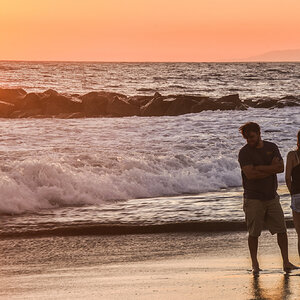
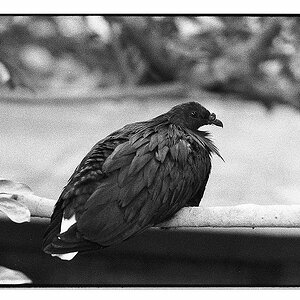
![[No title]](/data/xfmg/thumbnail/33/33342-79274d7e5cdf3e52939255e1cd89f2d0.jpg?1619735911)
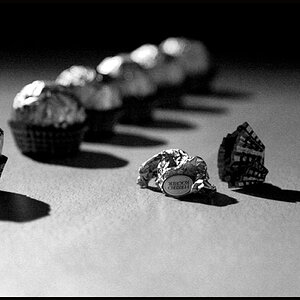
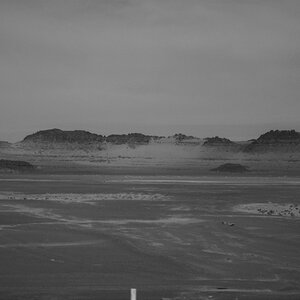
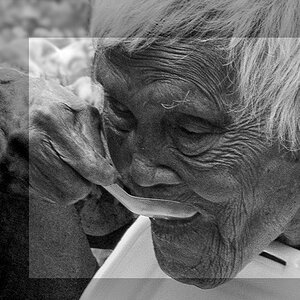

![[No title]](/data/xfmg/thumbnail/31/31741-ad9747739b48f0eb100f953fdf764930.jpg?1619734985)

